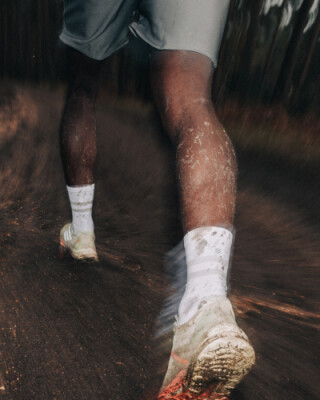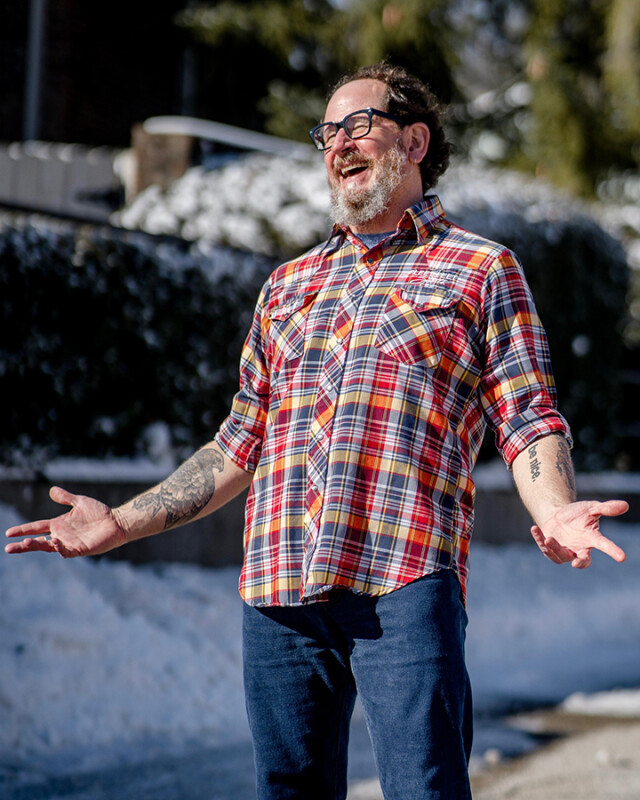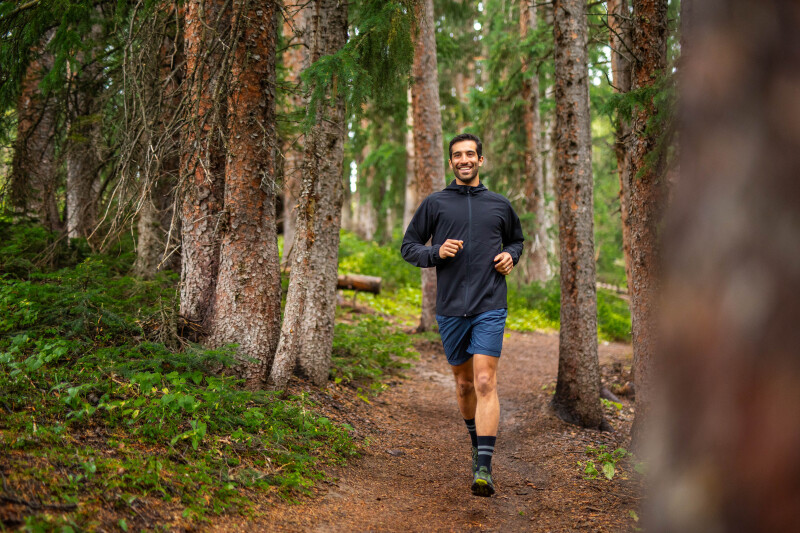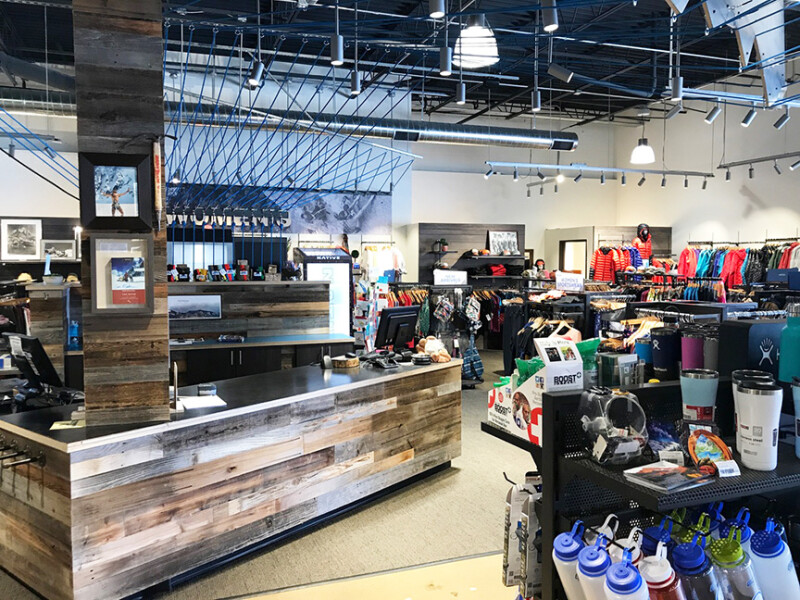In the world of running, shoes often hog the spotlight, leaving running socks as an afterthought or as a simple add-on to enhance the shoe-buying experience. But as runners continue to lace up for their next race, the awareness of sock technology is becoming more prevalent.
From custom-fit designs to moisture management technology, the evolution of running socks is transforming the way runners approach their training. Run specialty shops are placing more emphasis on these essential items, recognizing that the right pair of socks not only enhances comfort, but also aids in injury prevention and overall performance. With runners eager to optimize their gear, retailers are playing a pivotal role in guiding them to the sock that will make all the difference in their stride.
“Socks are for everyone. Every person who buys a pair of shoes from us will like those shoes more when they are paired with a technical sock,” says Alexis Kinney, a buyer at Up and Running, Dayton, OH. “Generally, runners are looking for a comfortable, moisture-wicking sock that stays put and prevents blisters.
“Past that, a lot of runners don’t know exactly what they’re looking for and looking at the sock wall can be overwhelming,” Kinney adds. “It’s our job to ask questions and narrow down the wall for them. We don’t necessarily have a sales pitch, but we do make it a priority to explain why good socks are important.”
The need for education is paramount as brands are constantly evolving the design process for socks and incorporating new fabrics with a variety of benefits. The ability for retailers to understand the products in their stores and guide buyers to an informed decision makes a big difference in a runner’s general understanding of what they are putting on their feet.
“Sock sales are an easy add-on and a high-margin product, but we like the sock business because we believe that good socks make the difference in fit and feel of the shoes,” says Dawn Fabbro, co-owner of Fleet Feet Montclair, Montclair, NJ, adding that they don’t want ill-fitting socks to be a barrier to the fit process. “Shoes are the cake, socks are the icing.”
Fabbro believes that socks that don’t fit properly can make the back of the shoe feel like it’s slipping and won’t allow the shoe to hug the foot in a seamless way. “If you get a customer into a good pair of socks, it can be life-changing,” she says. “Sometimes just getting it onto their foot can make the difference in the outfitting process. Add-on sales and margins are a welcome plus, but a high-tech, great-fitting sock, complementing innovative shoes, completes the positive fit experience.”
Understanding the Sock Market
For both new and seasoned runners, understanding the benefits sock brands have to offer can be overwhelming, especially for technical socks that come at a higher price point. That’s why retailers are encouraging customers to try on premium socks in-store to truly feel the difference.
“New runners are more likely to buy the sock if they have tried it on with the shoe, which is why we’ve had great success with the ‘Off the Wall’ program, as coined by Swiftwick,” says Kinney. “Ultimately, budget plays a role, but if we have done our job in explaining why socks are important, customers are likely to buy in.”
Asking the customer what kind of socks they are wearing also gives retailers an “in” when trying to understand their needs. Wearing traditional cotton socks can cause blisters and discomfort while running, although many runners might not realize that there are better options available until they are asked.
“We find that when we start to ask them about their socks it is highly likely they will purchase a new pair of socks,” explains Allie Cook, a buyer at Runner’s Edge, Farmingdale, NY. “Some consumers are still weary of the price for a single pair of socks and certain brands are definitely higher, so it’s important for us to let them know the value and how long they will last.”
Adding a technical sock onto a shoe or apparel purchase can be pricey for runners looking to stay within a certain budget. Buying a sock might end up breaking the bank for some, especially those less concerned with the benefits of technical socks. That’s why retailers welcome the opportunity to offer vendor promotions in their store.
“We embrace vendor promotions like the buy-three-get-one-free promo, which encourages customers new to high-tech performance socks to give them a try. Hopefully giving them the experience of a better product, creates a well-informed consumer,” says Fabbro.
Merchandising Socks
Retailers have also found that the way socks are merchandised in-store also has an impact on runners’ level of interest in buying socks.
“We do treat socks as a separate category, but they are located right next to the shoe wall and are an essential part of the conversation at the fit bench,” points out Kim Chapman, owner of Bull City Running, Durham, NC. “We always keep clean try-on socks at the fit bench and if customers like the sock they try as part of their fit experience, they often leave with a fresh pair or two.”
Having a separate section for socks is not uncommon to help draw attention to these essential items and retailers have found that the way they are organized is important is well.
“We have a separate wall dedicated to all our socks. We have them merchandised by brand and then by cushion, weight and style-low cut, quarter, etc.,” explains Cook. “In one of our locations the section is right next to our shoe wall. At our other location the customer will see all the socks when testing out the new shoes down our track. We find both walls are strategic in catching the customers attention.”
However, for avid runners sock education extends beyond the face-to-face interactions. In the age of internet and social media, many consumers get their information online. Run retailers are recognizing this and doing their part to ensure they are playing an active role in the education runners have access to when it comes to the socks they buy.
“We did an Instagram video explaining the benefits of Feetures socks compared to a cheap cotton sock and highlighted the sweat wicking properties, blister protection and the antimicrobial properties of the socks,” says Fabbro. “We have seen increased sales in our sock business year over year.”
In 5K training programs Fleet Feet Montclair does a “Dress for Success” talk that explains the benefits of having good socks to participants new to running and walking. Fabbro says they are often shocked that a pair of typical feet has 250,000 sweat glands and produces about a half a pint of sweat a day. “Explaining the importance of wicking moisture away from the feet, is our entry point to education,” says Fabbro.
Working With Sock Vendors
Run retailers care about educating their customers, but it’s necessary for sock brands and vendors to make the same commitment to runners in order to sell more socks. For retailers, having a relationship with those key vendors that helps them educate and support their local community means everything.
Says Chapman: “Sock brands should provide retail partners with plenty of try-on socks so that customers can experience them in-store, provide seed socks to staff so that we can share our recommendation based on personal experience, and consider supporting training programs that are sponsored by retail partners. Half and full marathon training program participants are a captive audience and they typically buy a couple of pairs of shoes throughout their training cycle.
“Since we know that a proper pair of running socks can be run-changing, if not life-changing, it’s an easy marketing strategy and a great way to get your brand in front of dedicated runners.”






